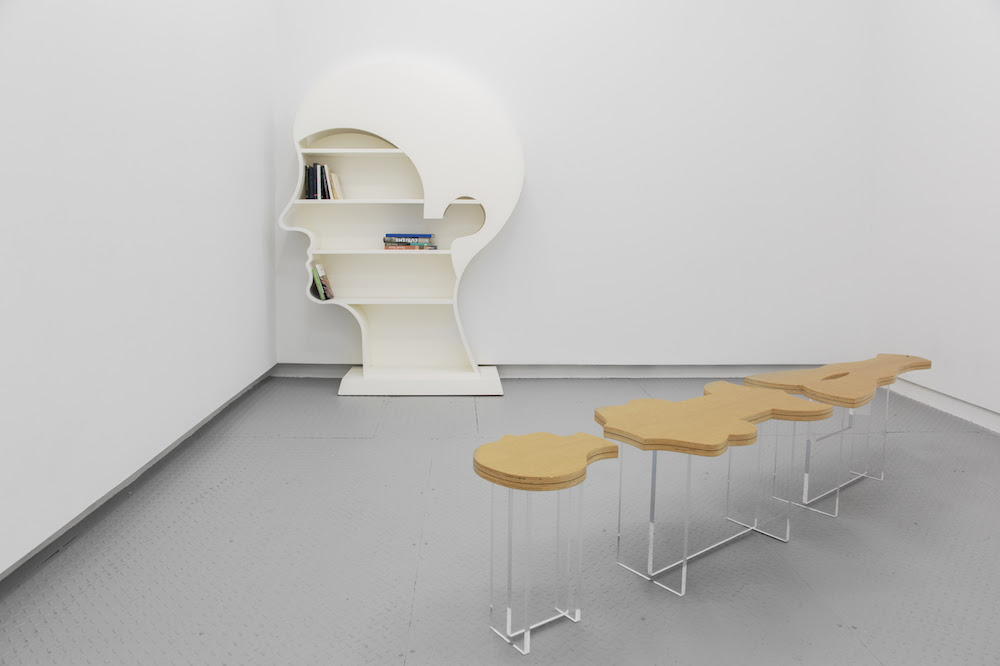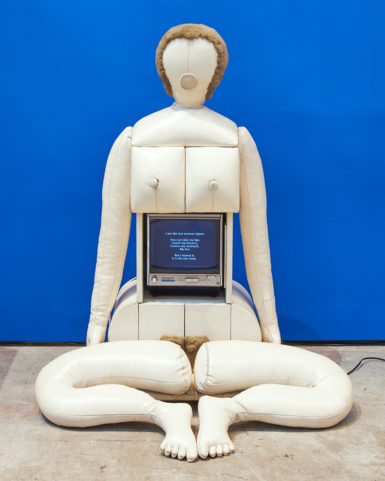[ad_1]

Installation view of “Chère,” 2018, at Arsenal Contemporary, New York, featuring work by Nicola L.
COURTESY ARSENAL CONTEMPORARY
Artist Nicola L., who has become more widely known in the past few years for her witty feminist sculptures, videos, and performances dealing with the human body, died on Monday at the age of 81, according to Ruba Katrib, who curated the artist’s 2017 retrospective at SculptureCenter in New York. L.’s cause of death was not immediately made available.
“Nicola was dedicated to art and politics, never concerned with prescriptive modes of making,” Katrib said in an email. “She embedded her singular vision into hybrid-forms of sculpture, painting, clothing, performance, furniture, and early interactive pieces, while also making films and writing plays. She lived with her art in the Chelsea Hotel; her family lived with it as well. She fearlessly tried new things and never got enough credit for her influential pieces, many of which have circulated widely, becoming iconic, yet often unattributed.”
Many of her most famous works depict a state in which bodies—often, though not always, female ones—are objectified. Her sculptures turn feet into chairs and male bodies into sofas. These objects, which draw on the legacy of Surrealism and can in some cases actually be used as furniture, have a tendency to be both funny and disturbing in equal measure.
Born in 1937 in Mazagan, Morocco, L. began her career as a painter shortly after graduating from the École Nationale Supérieure des Beaux-Arts in Paris. But after the artist Alberto Greco asked her how she could possibly take up painting after Marcel Duchamp (who had famously quit the medium), she burned all her previous works and turned to sculpture.
During the 1960s, L. was affiliated with the Nouveau Réalisme movement in Paris, showing alongside Yves Klein at the storied Galerie Iris Clert and receiving early acclaim from the French critic Pierre Restany. But only in recent years has her role as one of the pioneering women in Pop been emphasized, thanks in part to her appearance in “The World Goes Pop,” an expansive, international survey of the movement that Tate Modern in London presented in 2015.

Nicola L., Little TV Woman: ‘I Am the Last Woman Object’, 1969.
COURTESY XAVIER GELLIER AND SCULPTURECENTER, NEW YORK/KYLE KNODELL
L.’s SculptureCenter retrospective—the first institutional exhibition to survey her career—followed two years later. She is currently featured in “Chère,” a four-person group show at Arsenal Contemporary gallery in New York, where the artist had been partially based since 1979. (She split her time between a room at the Chelsea Hotel and Paris.)
Some of L.’s work deals with what it might mean for an artwork to be functional. In 1969, L. staged the work The Red Coat Same Skin for Everyone for the first time in Barcelona. The piece, which involved having a group of 11 people wear a large piece of red fabric, contained no explicit political content, but authorities associated with the dictator Francisco Franco interpreted the work as being subversive and shut down the performance. L. restaged it several more times in the following two decades.
While working in Paris and Ibiza, Spain, during the 1960s and 1970s, L. grew close to a group of South American artists and musicians that included Gilberto Gil, Marta Minujín, and Caetano Veloso. Many of her works from the period can be considered collaborations of a sort.
Often L.’s work bore explicitly feminist commentaries. Her 1969 sculpture Little TV Woman: ‘I Am the Last Woman Object’ takes the form of an oversized female form that has drawers for breasts and a television monitor for a stomach that periodically displays a message for its viewers: “I am the last woman object. You can take my lips, touch my breasts, caress my stomach, my sex. But I repeat it, it is the last time.”
[ad_2]
Source link

